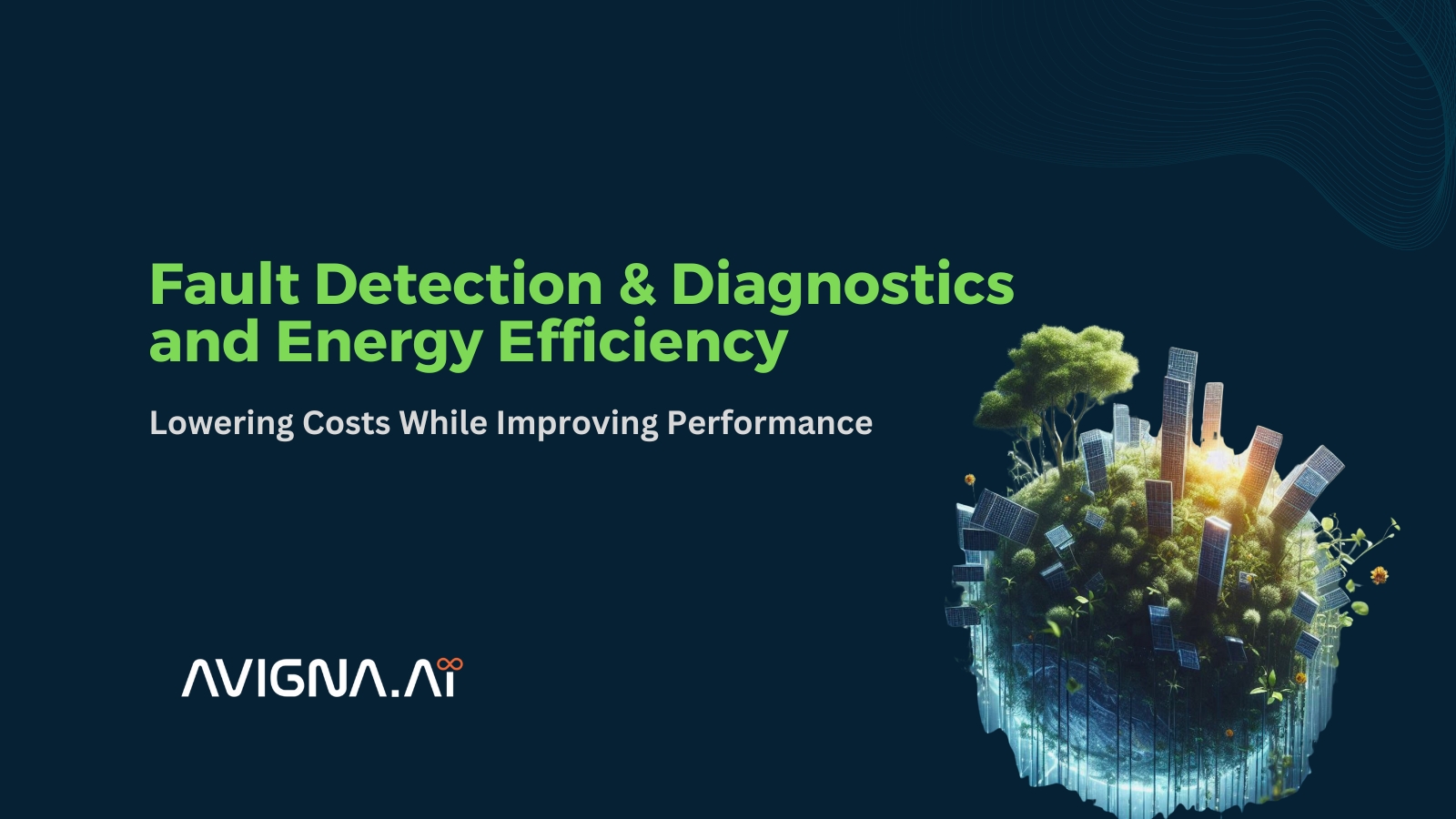How Predictive Maintenance Can Reduce HVAC Downtime in Commercial Buildings
Maintenance is essential HVAC systems in the commercial buildings. It is a common practice to rely on reactive, scheduled, and preventive maintenance strategies to manage their HVAC systems. Reactive maintenance is used after the problem has arisen. The scheduled one is used for checking the system after a certain period. And the best of all is preventive maintenance which is about averting problems before happening. However, all these maintenance techniques are still ineffective in giving a satisfactory solution. At AvignaAI, we are experts in predictive maintenance for HVAC systems of commercial buildings, a reliable approach to reduce HVAC downtime. In this article, I will detail what is predictive maintenance and how HVAC predictive maintenance can reduce downtime in commercial buildings.
What Is HVAC Predictive Maintenance?
As we begin our discussion. let me define predictive maintenance. It means that a maintenance system based on data analysis which helps to bring down equipment breakdowns. Predictive maintenance collects and analyses real-time data from various sensors and sources within the HVAC system. Temperature, humidity, vibration etc. make up this data. Then, the system processes this data using algorithms based on patterns and the past anomalies.
Benefits of Predictive Maintenance
Predictive maintenance for HVAC systems in commercial buildings can bring about numerous benefits, including:
- Reduced Downtime and Improved Reliability: Predictive maintenance lets to detect malfunctions in the early state. So, it helps minimize HVAC system downtime by eliminating any failure beforehand.
- Enhanced Energy Efficiency: Facility managers can restore the system to optimal performance which delivers significant energy savings and reduce operational costs.
- Extended Equipment Lifespan: Improvements in the lifespan of HVAC systems are observed through predictive maintenance by predicting downtimes before they occur.
- Improved Occupant Comfort and Safety: HVAC Predictive maintenance helps to ensure that the system consistently delivers the required indoor environmental conditions. It contributes to the overall well-being of the occupants.
- Optimized Maintenance Scheduling and Inventory Management: Predictive maintenance enables facility managers to plan and schedule maintenance activities more effectively, by forecasting equipment failures and maintenance needs.

Predictive Maintenance Techniques for HVAC Systems
Maintenance staff ensure that the HVAC system of a building is in its best condition by implementing various predictive HVAC maintenance techniques such as:
Vibration Analysis
The first technique is monitoring the vibration patterns of HVAC components. These vibrations which are generated in motors, fans, and compressors can provide valuable information about their mechanical health. Any abnormal noise or vibration in these equipment increases chances for potential failure.
Thermal Imaging
Infrared cameras are widely used in implementing HVAC predictive maintenance. They are used to capture thermal images of HVAC equipment. Identification of hot spots or temperature anomalies becomes much easier that may indicate impending problems. This technique is particularly helpful for detecting faulty insulation, air leaks, or malfunctioning components.
Oil Analysis
Lubrication is also an important factor for smooth working of HVAC components. Regularly checking the condition of lubricating oils in equipment is helpful in predictive maintenance. Timely application of lubrication on components like gear and bearings improves their condition and lifespan.
Sensor Integration and Data Analytics
IoT integration in HVAC predictive maintenance can yield good results. The sensors can capture data in real time and monitor parameters such as heat, temperature and humidity. In the meantime, AI and machine learning algorithms analyze the data to identify patterns and predict potential failures.
Step-by-Step Implementation of Predictive HVAC Maintenance
Transitioning to predictive maintenance for HVAC systems requires a carefully planned and executed approach as follows:
Step 1: Assess the Current HVAC System
Begin the evaluation of the existing HVAC infrastructure by age, condition, and performance of the equipment. It helps in the identification and prioritization of the areas that would benefit the most from HVAC predictive maintenance.
Step 2: Integrate Sensor Technology
Equipping sensors such as infrared, or heat sensor in predictive maintenance can detect temperature, and humidity thereby, collecting data. Installation of these sensors must be done strategically to capture maximum amount of data. The collected data should then be stored in a secured system.
Step 3: Establish a Data Management and Analytics Framework
Creation of advanced algorithms to process the collected data is equally important. IoT implementation boosts your analysis to create an advanced analytics algorithm to study data. This analysis gives optimum results to evaluate failures and solutions.
Step 4: Train Maintenance Personnel
To run this new HVAC predictive maintenance system, skilled professionals are required. Training sessions should be made a priority to equip the facilities team with the knowledge and skills to effectively operate and maintain the predictive maintenance system.
Step 5: Integrate with Existing Building Management Systems
Commercial buildings also have building automation systems (BAS) or enterprise resource planning software (ERP) and these existing systems can be connected with the predictive HVAC maintenance system. It provides a centralized approach to facility management by enabling real-time monitoring, workflow optimization, and data-driven decision-making.
Step 6: Continuously Refine and Optimize
After successful implementation, regular review and monitoring of the predictive maintenance HVAC system should be done. New techniques and updates should be integrated to run the system effectively. Continuous improvement is crucial to ensure that the system remains accurate, reliable, and aligned with the evolving needs of the commercial building.
The Future of HVAC Predictive Maintenance
Now that as a commercial building owner you know what is HVAC predictive maintenance, it is time say goodbye to regular breakdowns and downtimes. As we look ahead, the integration of predictive maintenance into the overall building management ecosystem will become the new normal. It will ensure that HVAC systems operate at their peak performance, contributing to the overall success of commercial buildings.
To receive more guidance on Predictive maintenance of HVAC systems in your commercial buildings, please contact us at queries@avigna.ai.





